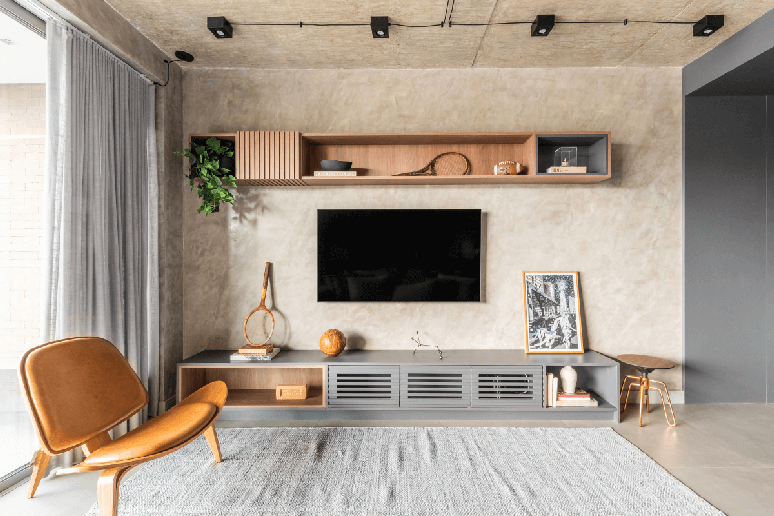-
The union between science, architecture and environmental conservation took shape in Campo Grande, in Mato Grosso do Sul, with the inauguration of the largest freshwater aquarium in the world.
Photo: reproduction from Instagram @bioparquepantanaloficial / Flip
-
The Bioparque Pantanal, inaugurated in 2022, is not only an important tourist attraction in Brazil: it is an international reference center for biodiversity, technological innovation and environmental education.
Photo: reproduction from Instagram @bioparquepantanaloficial / Flip
-
With free access by appointment, the space has attracted visitors of all ages, enchanting not only with the grandeur of its tanks, but also with its commitment to inclusion, sustainability and science.
Photo: Disclosure / Flip
-
The project was born with a clear ambition: to enhance freshwater ecosystems, in particular those of the Pantanal, the largest alluvial plain on the planet.
Photo: Disclosure / Flip
-
There are more than 5 million liters of water distributed in 239 tanks, of which 31 are themed, which recreate the habitats of fish and other aquatic organisms down to the smallest detail.
Photo: Disclosure / Flip
-
The public will be able to closely observe species such as the imposing arapaima, the Maria Fernanda jaú, the Fernanda Montenegro and Fernanda Torres rays, the anaconda Gaby Amarantos and the curious axolotl, as well as the albino python Capitu and the boa constrictor Rachel Carson.
Photo: Disclosure / Flip
-
In each of these tanks, visitors have the opportunity to immerse themselves in a real lesson on Brazilian and global fauna.
Photo: Disclosure / Flip
-
The building in which all this is installed is, in itself, a work of art. Designed by architect Ruy Ohtake, who passed away in 2021, the building was designed with curved lines reminiscent of the meandering course of the Pantanal rivers.
Photo: reproduction from Instagram @bioparquepantanaloficial / Flip
-
In addition to its aesthetic beauty, the structure defies engineering with thick acrylic panels – reaching 40 centimeters – and an automated life support system, which keeps the aquatic environments in perfect balance.
Photo: reproduction from Instagram @bioparquepantanaloficial / Flip
-
Nothing was done by chance. After all, every detail of the Bioparque has been designed to combine functionality, accessibility and visual impact.
Photo: Disclosure / Flip
-
Space is also an important center for scientific research. On one of the floors is the Neotropical Fish Conservation Center, which is responsible for unprecedented results in the reproduction of aquatic species. More than 300 plays have already been recorded.
Photo: Disclosure / Flip
-
This includes 25 species that have never been reproduced in laboratories worldwide. Another 15 had only been studied outside Brazil. These findings help preserve endangered species and provide in-depth knowledge of the life cycles of these animals.
Photo: Disclosure / Flip
-
The Biopark’s activities go beyond biology. Nuptec – internal nucleus dedicated to technology – is divided into four areas: Sustainable Technologies, Educational Technologies, Social Technologies and Development and Innovation.
Photo: – Disclosure / Flip
-
This makes Bioparque a reference not only in conservation, but also in applied research with particular attention to sustainability.
Photo: Disclosure / Flip
-
Another differentiator is the commitment to accessibility. The “Bioparco per tutti – Equal in difference” program was created to guarantee the welcome of all people, regardless of their physical, sensorial or cognitive limitations.
Photo: Disclosure / Flip
-
Signage in Portuguese and English, humanized service and constant staff training contribute to an inclusive visit experience, where free time goes hand in hand with knowledge.
Photo: Disclosure / Flip
-
In addition to guided tours of the aquariums, the Bioparque also offers educational activities promoted by the Environmental Education Centre. One of the most discussed fronts is that of the circular economy, a concept that proposes the reuse of resources.
Photo: Disclosure / Flip
-
Teachers and tutors work directly with the school public and also with visitors in general, stimulating reflections on conscious consumption and the preservation of ecosystems.
Photo: Disclosure / Flip
-
On public holidays and commemorative days the Bioparque is usually open at particular times, with entrance open until early afternoon. Trained guides are available throughout the circuit to answer questions and share interesting facts about the animals and behind-the-scenes details of the aquarium.
Photo: Disclosure / Flip
-
The entire structure transformed the complex not only into a major tourist attraction, but also into an effective tool for scientific dissemination.
Photo: Disclosure / Flip
-
The Pantanal Biopark, therefore, represents a new model of public space. A place where architecture, technology and nature dialogue with society in a direct, educational and accessible way.
Photo: – Disclosure / Flip
-
In times of climate urgency and biodiversity loss, initiatives like this become essential to train new generations who are more aware and prepared to take care of the planet.
Photo: Disclosure / Flip
To share
Source: Terra
Ben Stock is a lifestyle journalist and author at Gossipify. He writes about topics such as health, wellness, travel, food and home decor. He provides practical advice and inspiration to improve well-being, keeps readers up to date with latest lifestyle news and trends, known for his engaging writing style, in-depth analysis and unique perspectives.






